- Home
- Stephen Hunter
Havana Page 38
Havana Read online
Page 38
“Yes. I thought maybe Plans would renege on his promise when the gangsters failed to get Earl, but I suspect he realizes I know too much and have too much talent. And he’d already been telling people what a find I was, how I was the next him. I could be too, you know.”
“I know. You are a formidable young man.”
“Of course all this is possible, my friend, because you got me that picture of yourself and poor Roger. Saved the Short bacon but good. That was the Big Noise! Boola-boola! What a stroke of genius!”
“Wasn’t it. But it wasn’t mine. Speshnev used the same photo to blackmail me, can you believe it? The audacity of the man. He is a classic technician though, one must say.”
“So I’m a hero. And for you?”
“Well, the old fox has promised to use his influence on my behalf as well. So with your supervisor believing in you and the current man of the hour Speshnev fulfilling his part of our bargain, I do believe I’ll be moving ahead shortly to a better posting. Plus, of course there are family allies working for me in Moscow. So this has worked out very well for both of us, I think. Possibly I’ll get to Berlin as well.”
“Wouldn’t that be a treat! Imagine how much fun we could have!”
“Imagine how far we could go. I’d give you all my colleagues’ operations and you’d give me all your colleagues’ operations. Yours and mine would flourish, theirs would fail. We’d be chiefs in a year!”
“The future,” said Frenchy Short, “has never looked better. Progress is our most important product!”
The two young men raised a toast to their brilliant futures.
Chapter 63
The boy had worked it out, he knew what he had to do, he set about to do it in an orderly fashion. He prepared for the day in the cool blaze of fall when he could fire a rifle and bring down a deer. It wasn’t that he wanted to kill the animal for the pleasure of the killing. It wasn’t even that the family could use the meat, though of course it could. It was, rather, some sense that in the spring, with his father, he had failed. And that very day his father had vanished, and not come back. So in his mind the two were connected: his failure, his father’s disappearance. He solved this problem in a direct fashion: he would bring his father back to him by killing a deer and in some way changing fate.
He’d thought about his failure. He lacked confidence. When he’d brought the rifle up, its heaviness quickly overcame him. He believed he saw a wobble at the front sight and knew he could not yet shoot well enough to slay the creature cleanly, and so he’d panicked. That is how he reasoned.
Therefore salvation lay in the rifle. It was a Winchester .30-30, turned gray, close to purple, for the wear on its once royal-blue finish. It had a steel crescent of a butt plate, and was thin and rattly.
He shot it every morning and every afternoon. A father should teach a boy these things but he committed to the rifle not with his father but to save his father. He read books on the rifle. He didn’t understand the words sometimes, but he labored onward, educating himself, applying his mind and finding what his talents were. He studied ballistics tables, a helter-skelter of numbers that eventually clarified into something hard and clean and truthful. He talked to men who were hunters or known for their shooting ability. He gave himself to the rifle.
“All that boy does is shoot,” his mother would say. “I’m glad he’s doing something, because, Lord knows, when Earl was first gone, he just sat around with a long face. But somewhere he decided he would make himself the best shot in the county and surprise his daddy when his daddy comes home, and now it is a full obsession with him.”
The boy drew guns in the margins of his schoolbooks and read the famous writers on guns, Elmer Kaye and Jack O’Brien and even the late Ed McGriffin’s great book, Fast Guns and Trick Shots. He read Field and Stream and Sports Afield and The American Rifleman. He went to the library and read A Rifleman Went to War and With British Snipers to the Reich and biographies of Audie Ryan and Alvin York, heroes of the rifle. He read all the Samworth books on firearms and hunting and soon enough knew a Luger from a .45 and a Peacemaker from a Schofield and a Nambu from an Ortgies. The more he read, the more he knew; for some reason, the information just stuck in his mind, and he saw connections and controversies and lessons.
His own shooting abilities grew steadily; it seemed he had a talent, just like his daddy. He could hit things. He knew soon enough to read his own heart, and to shoot between beats. His finger grew subtle and disciplined in the ways it pressed against the trigger, so that it never jerked or hurried, but always came back in the same smooth way, waiting for the trigger on the old 94 to break off, feeling the springs fight him and then snap. He took a hundred dryfired shots every night and by the second week did it with a penny balanced on the top of the receiver so that in pulling the trigger he didn’t disturb the sight picture. He worked all the positions. He built the subtle undermuscles that made him rock-steady in any position.
The hot months of July and August gave way to September. A crispness came to the air, and ever so slowly the lushness of the west Arkansas woods began to suggest the coming of riotous color, a last blast of activity before the snow. So it was fall. So he had worked obsessively for two months. So a spurt of growth had come to him in his obsessiveness and he no longer had a boy’s body, but was acquiring what would become a man’s body. So now he stood back of the house in a hollow where he had improvised a shooting range. So now he inserted a .30-30 and with easy, steady, practiced fluidity, worked the lever, seating the round. The rifle came up steadily, steadied, and he found his position, the right balance of tightness, looseness, strength, and gentleness. At last the front sight settled in. It would never be dead still, but he knew that the figure-eight it traced would grow smaller and stiller until at last he could anticipate when it was on the target, and when that happened, at some instinctive level, he fired. He didn’t hear the report, he didn’t feel the recoil.
Far off a puff of dust rose behind a target stand. He called the shot perfect, and knew it was perfect. He opened the action of the rifle, shucked the spent case, picked up his father’s binoculars, and indeed saw a cluster of holes in the ten-ring a hundred yards away. He could put bullets there hour after hour.
He turned, feeling good about what he had taught himself to do, seeing some value in it.
My daddy would be proud, he thought.
He picked up the shell, put it in his pocket for later reloading, and climbed from the hollow. It was near dark. A chill sliced the air. He shivered. Somehow time had passed. And then he saw the man.
It looked like a hobo, skinny and bent, shuffling up the long driveway from Route 8 a half-mile away, looking for a handout. The man walked wearily, as if his journey had been long and hard, and nothing in him seemed familiar.
And then of course it seemed all familiar, for the man assembled himself, almost magically, into his father.
“Daddy!” he screamed. His heart jumped, a spasm of pleasure and relief shot through him. He danced, he skipped, he ran, he ran, he ran.
His father, by cruel magic a much older man now, watched him come, and knelt to absorb the boy in his arms and lift him and hug him.
“Daddy, Daddy, I won’t never miss no deer again, I swear to you, I promise, Daddy.”
“That’s fine, Bob Lee, it don’t matter. I am home to stay and you can bet on that one!”
Acknowledgments
This novel didn’t exist until a certain moment in time. I met my editor, the legendary Michael Korda, at a famous New York restaurant. In my pocket were sixteen index cards with sixteen ideas for The Next Book. I knew they pretty much sucked; I wasn’t a happy traveler. Most writers will know what I am talking about.
Michael showed up in typical full-Korda fashion: ebullient, cosmopolitan, wickedly amused by the world’s folly and full of peppery energy. He declared, “Steve, I have an idea for you.”
I should tell you, I don’t like other people’s ideas. I can never seem to make them work
; they never feel quite right. But he was paying, for both the lunch and the book, and so I smiled and said, okay, let’s hear it, while thinking, How soon before he forgets this one?
He said three words: “Earl in Havana.”
I knew instantly: that was the rest of my life, at least for a year or so.
I don’t know if the rest is history, but it certainly was fun. So the first thanks go to Michael Korda for the best other-people idea I ever heard in my life and for a great year in the brothels and casinos of Old Havana and the killing fields of Santiago.
In Cuba, I have to thank my friend and translator Jorge Gonzalez, who trundled me all about the capital city in his thirteen-year-old Lada, explaining things and showing things. He got me to Hemingway’s and to the Sevilla-Biltmore and the Nacionale and helped me locate what was once the Teatro Shanghai on Zanja Street and is now an empty field with a sign that says something absurd in that blowy commie rhetoric that is the Fidel style: “Cubans United for the Revolution.” As if they had a choice.
Jorge was a gentleman and a scholar and I had a great time with him.
In Santiago I stayed atop San Juan Hill and hired two drivers; one, improbably, was named Bryce. I’m sure he went home to his wife Muffy and their two kids, Skip and Holly, where they followed the Harvard crew results. He was a decent man; the find, however, came the next day in the form of a bright green 1956 Chrysler Imperial with those little satellite taillights on the fins. Really a cool car. But the owner of this automobile was a young man named Wenkle as I understood it, and he was a terrific guy. We did Santiago together. The next day, when I flew back to Havana, he drove me to the airport and felt he had to introduce me to his wife and son. I rode in back with the kid, four, shy and beautiful, who finally called me “Inglis,” just like I was Robert Jordan. How cool is that? I’m hoping for the best for Wenkle and his family; that car alone should be worth seventy-five grand when the thaw finally comes.
Here, the usual merry band helped out. The fabulous Jean Marbella actually hooked me up with Jorge, whom she had met on one of her several trips to the island for The Baltimore Sun. At the Washington Post, my two immediate supervisors—good old John Pancake and Peter Kaufman—were unperturbably supportive. Gene Robinson, the assistant managing editor for Style, is an old Cuba hand (he’s writing a book about Cuban music) and he gave me excellent advice. Paul Richard pitched in with reading suggestions and enthusiasm. Retired from the Post, Bill Smart, who actually logged time in Cuba in the fifties, helped me recreate the Plaza de Armas in Santiago as it was then, as opposed to the New Socialist Concrete-Gothic monstrosity it’s become. Henry Allen made a great, late catch.
My friends Weyman Swagger (also my portraitist), Lenne Miller and Bob Lopez pitched in with keen early readings. Weyman, as I’ve said before, is a superb natural editor. Mike Clark, the film critic of USA Today, loaned me his video copies of three Cuban-set films, most important Our Man in Havana, which, among other delights, is the best photographic record of Havana in the fifties available. From Marc Dozal at Noirfilm.com I got another batch of film noirs with Cuban settings or occasional Cuban motifs, including Miami Expose and Affair in Havana. Marc also found me a copy of Our Man in Havana that I didn’t have to give back and could study at my leisure. So in some sense my roman noir is set in a film noir. My good friend and hunting partner John Bainbridge gave me a superb proofreading job. And thanks again to Bob Beers, who voluntarily maintains a website at www.stephenhunter.net. Why he does this I have no idea, but he seems to enjoy it.
A few confessions: I am aware that the Earl of Havana doesn’t connect in perfect joinery with the first Earl, of Black Light so many years ago. I trust readers will understand that he’s grown in complexity and experience as I’ve stayed with him over the past few books. Possibly in some better future I’ll have a chance to do another pass on Black Light—I suppose when Harvard brings out the Collected Novels of Stephen Hunter—and reconcile the two Earls into one figure.
I should also say that the pistol I refer to consistently as the Super .38 is now called a .38 Super. I’m not sure when the Super migrated to the rear of the construction, but all the original Colt period documents of the gun call it a Super .38 through the fifties at least. Mine, built in 1949, is stamped “Colt Super .38” on the slide. I decided to go with Colt. If they don’t know, who does?
Finally, as to historicity. The CIA was clearly aware of Castro as early as 1953; the rest I’ve jiggered to suit my dramatic needs, and had a hell of a good time doing so. For the record, everything is where I say it is in the book and it looks like I say it looks. I make certain adjustments for the sake of simplicity and because I am a novelist, not a historian: other rebel initiatives on the night of July 26, 1953, meant to coincide with the attack on the barracks, I chose to ignore. (By the way, a really good historical narrative on Moncada in English has yet to be written; some brilliant young nonfiction writer out there, get busy.) Fidel was captured a few miles north of where I place him, not on a beach but in a farmhouse while he slept, though his capturer was indeed Lieutenant Sarria; there was an infamous torturer in Santiago named Ojos Bellos, though what became of him I don’t know. I hope it wasn’t pretty.
Finally, we have no idea when Soviet contact with Castro began. I’ve enjoyed imagining that it began in 1953. Whatever, History will absolve me.

 Point of Impact
Point of Impact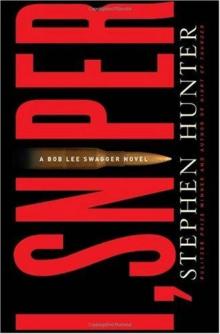 I, Sniper
I, Sniper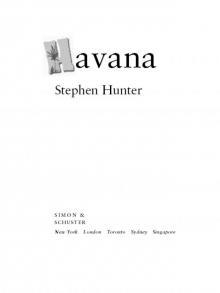 Havana
Havana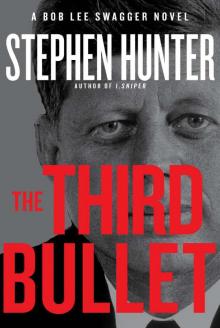 The Third Bullet
The Third Bullet Sniper's Honor: A Bob Lee Swagger Novel
Sniper's Honor: A Bob Lee Swagger Novel Dirty White Boys
Dirty White Boys The 47th Samurai
The 47th Samurai Hot Springs
Hot Springs G-Man
G-Man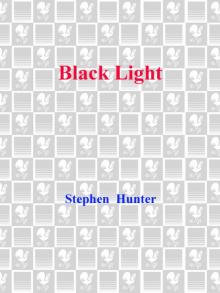 Black Light
Black Light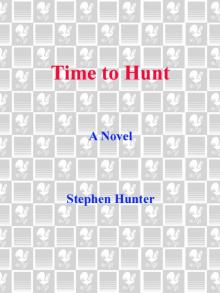 Time to Hunt
Time to Hunt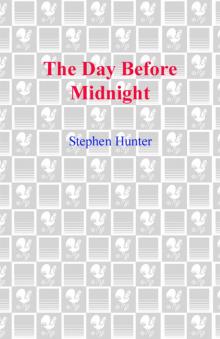 The Day Before Midnight
The Day Before Midnight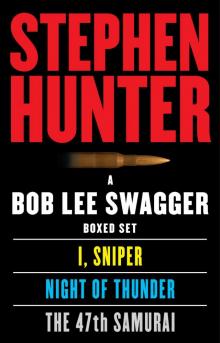 A Bob Lee Swagger Boxed Set
A Bob Lee Swagger Boxed Set The Master Sniper
The Master Sniper Game of Snipers
Game of Snipers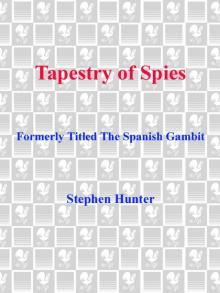 Tapestry of Spies
Tapestry of Spies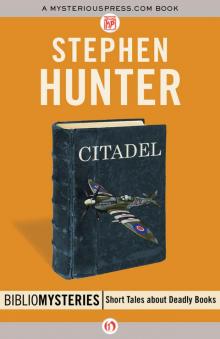 Citadel
Citadel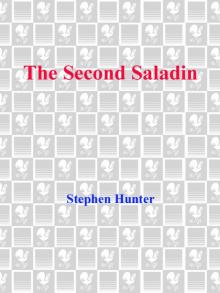 The Second Saladin
The Second Saladin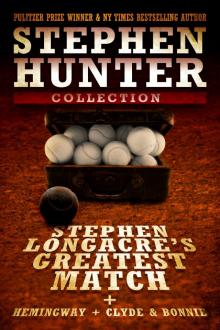 Stephen Longacre's Greatest Match
Stephen Longacre's Greatest Match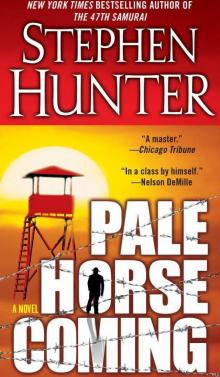 Pale Horse Coming
Pale Horse Coming Soft Target
Soft Target Dead Zero
Dead Zero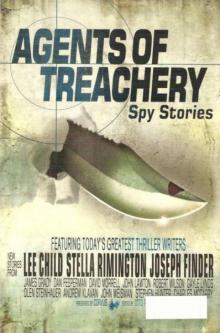 Casey at the Bat
Casey at the Bat The Third Bullet bls-8
The Third Bullet bls-8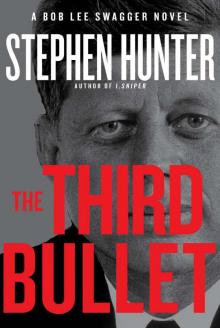 The Third Bullet: A Bob Lee Swagger Novel
The Third Bullet: A Bob Lee Swagger Novel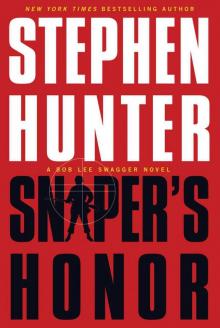 Sniper's Honor
Sniper's Honor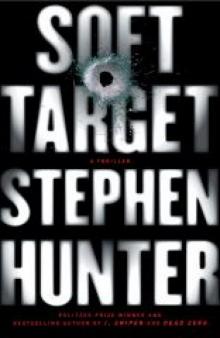 Soft target rc-1
Soft target rc-1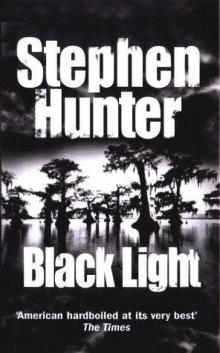 Black Light bls-2
Black Light bls-2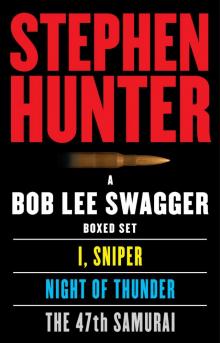 A Bob Lee Swagger eBook Boxed Set: I, Sniper, Night of Thunder, 47th Samurai
A Bob Lee Swagger eBook Boxed Set: I, Sniper, Night of Thunder, 47th Samurai Havana es-3
Havana es-3 Hot Springs (Earl Swagger)
Hot Springs (Earl Swagger)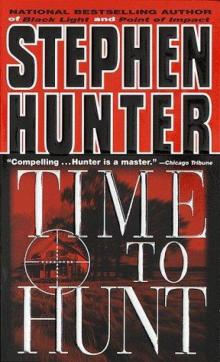 Time to Hunt bls-1
Time to Hunt bls-1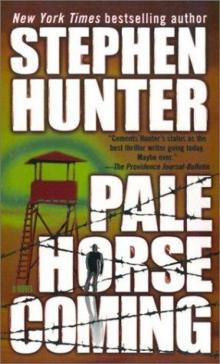 Pale Horse Coming es-2
Pale Horse Coming es-2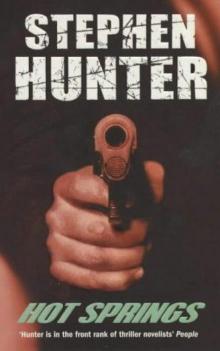 Hot Springs es-1
Hot Springs es-1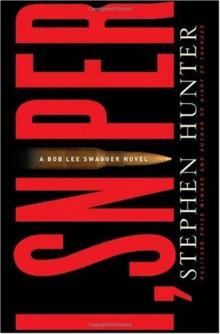 I, Sniper: A Bob Lee Swagger Novel
I, Sniper: A Bob Lee Swagger Novel